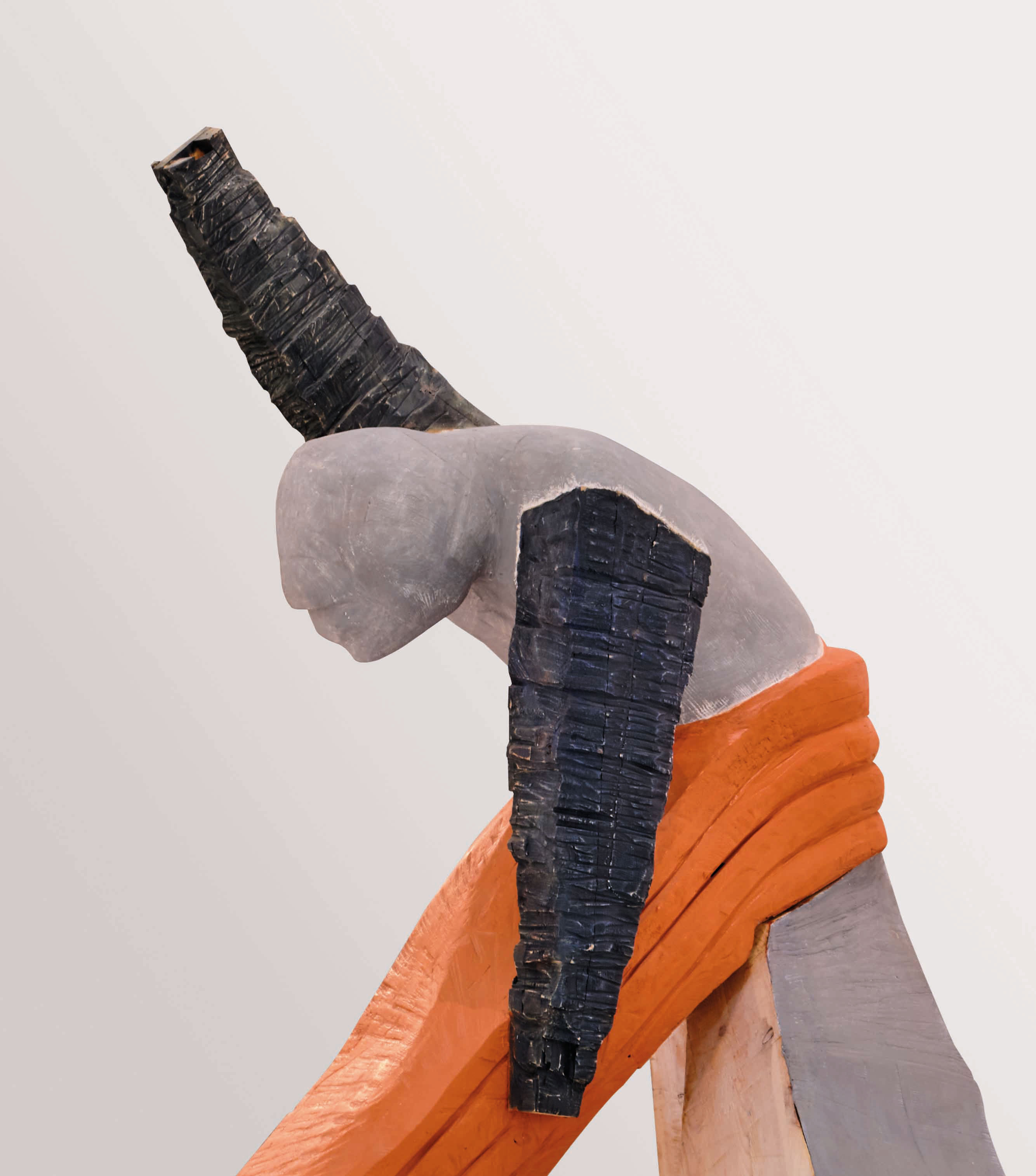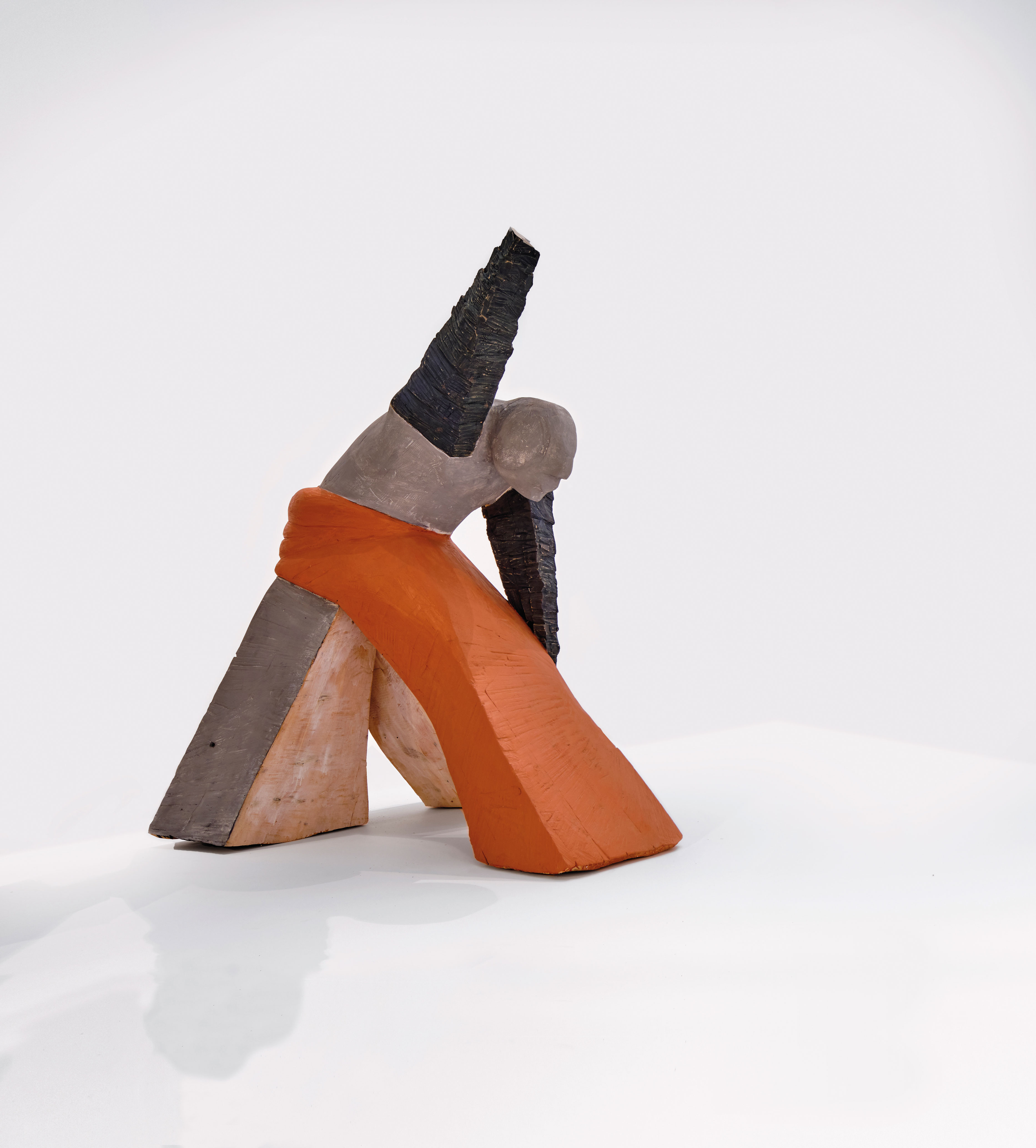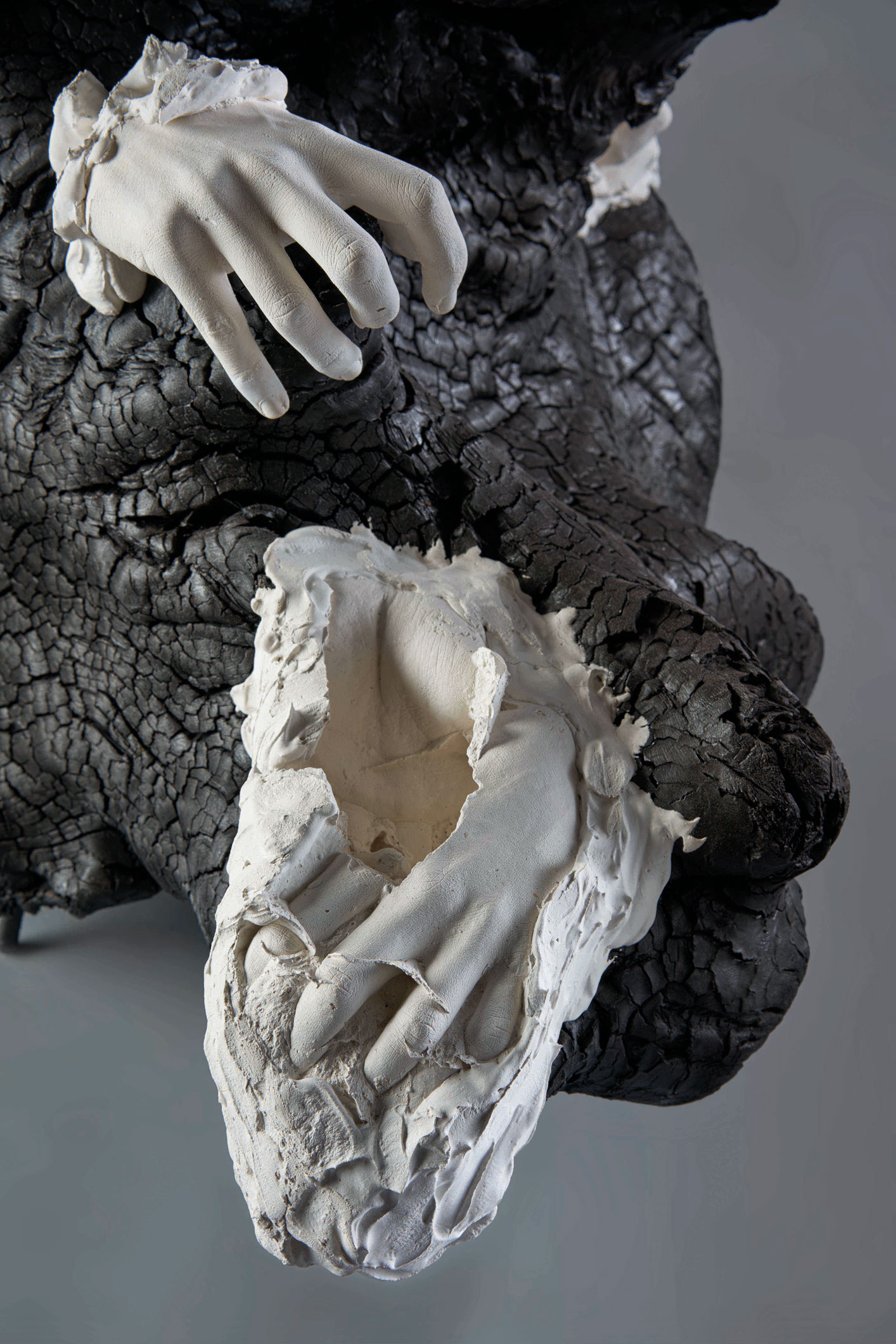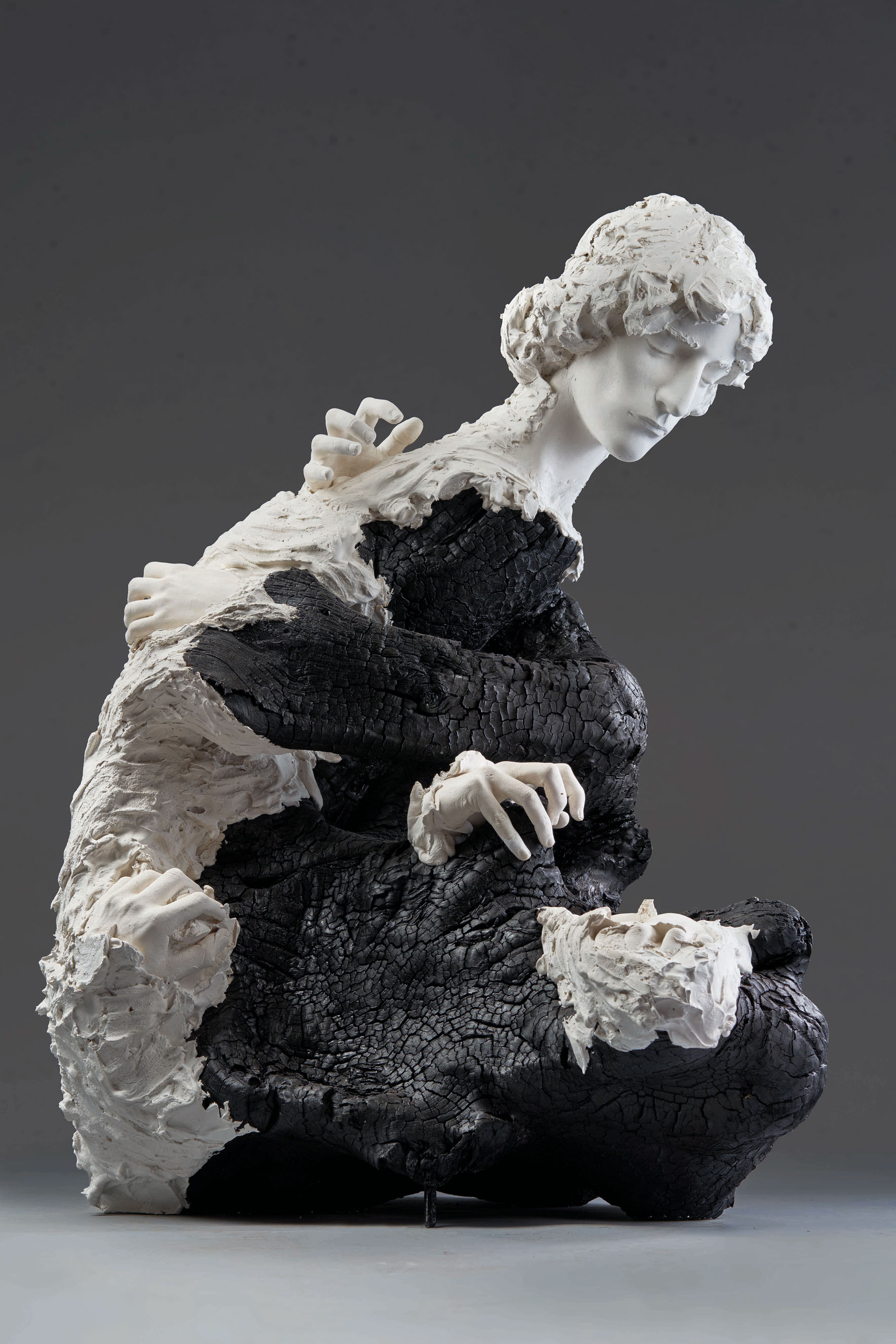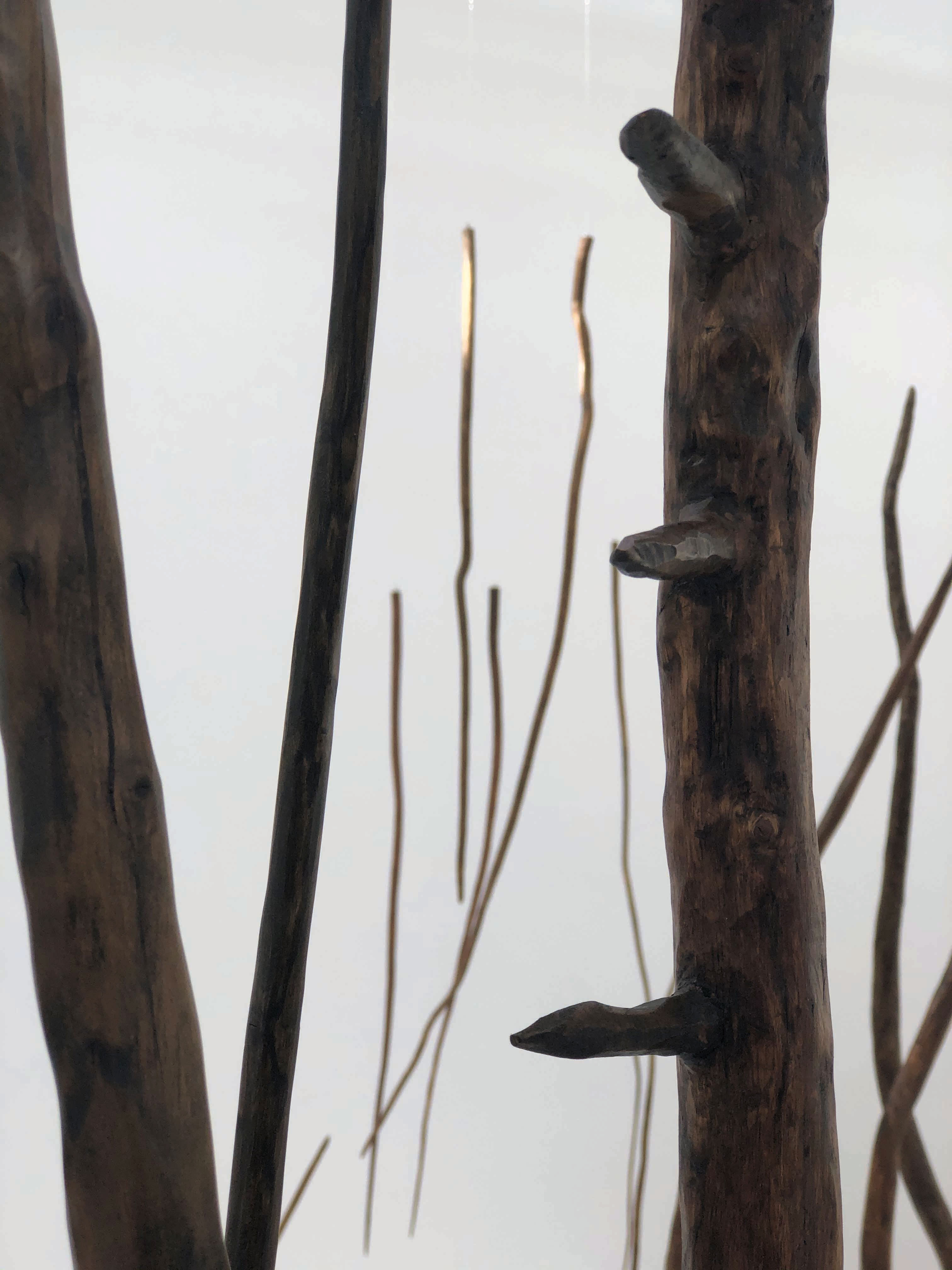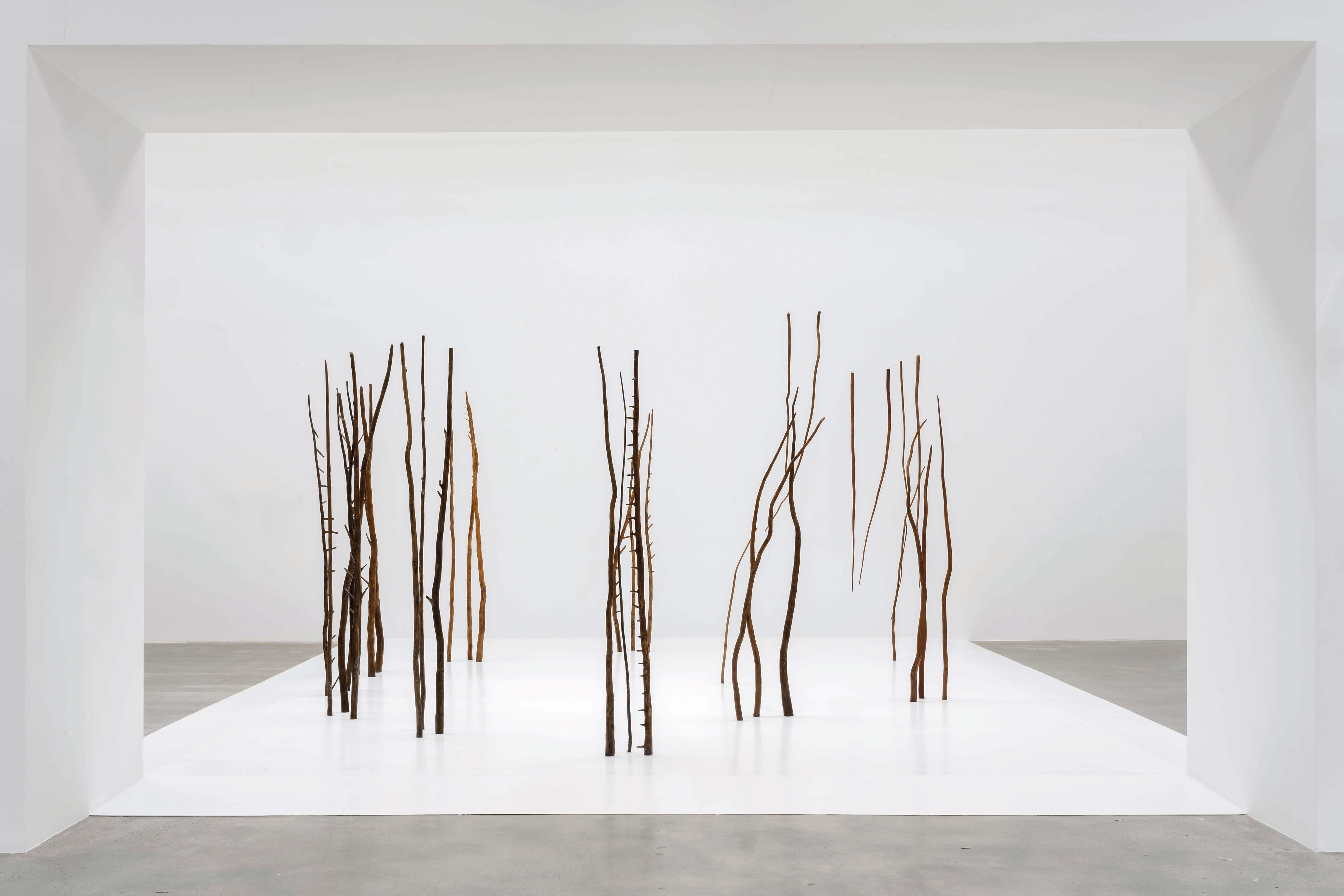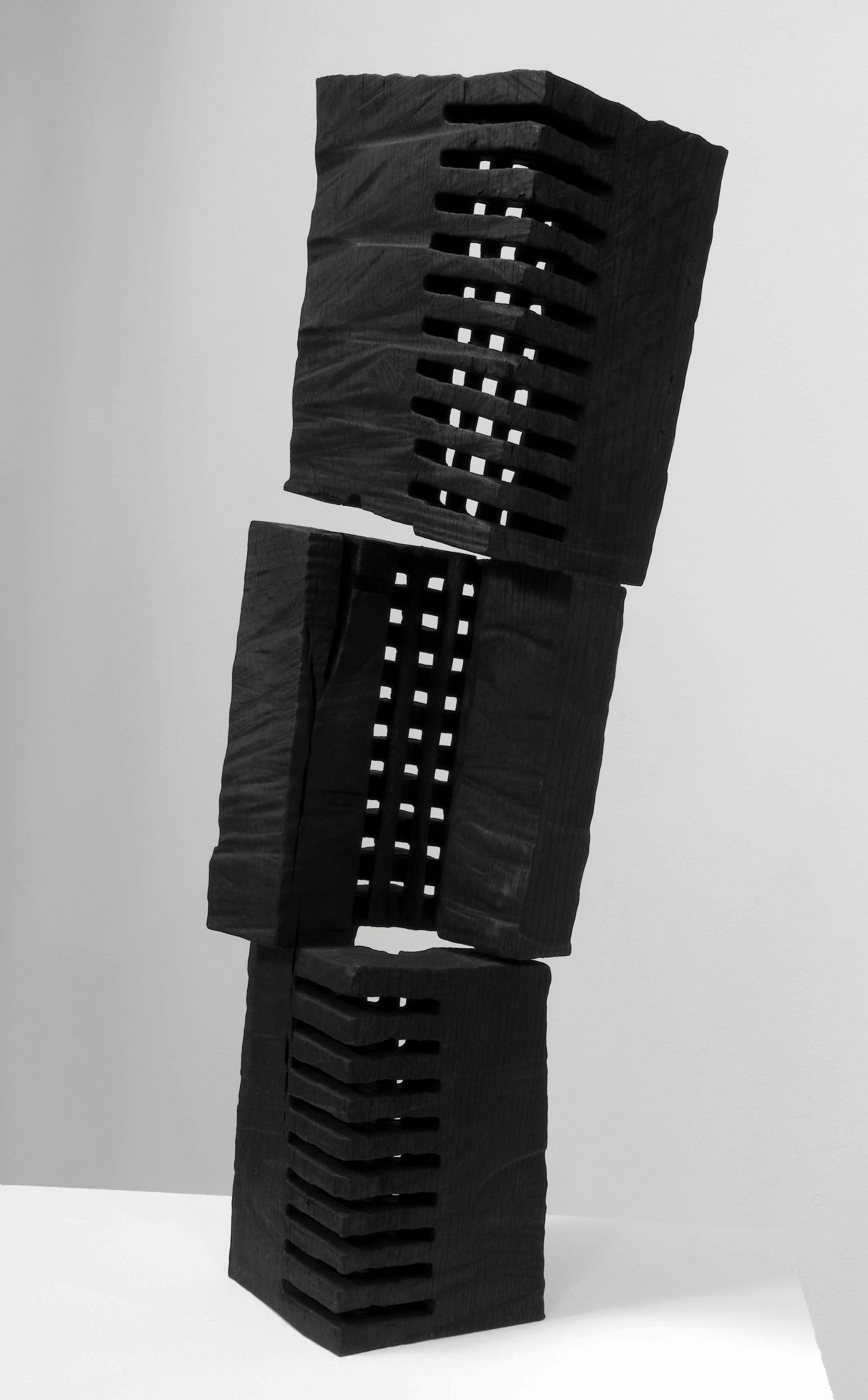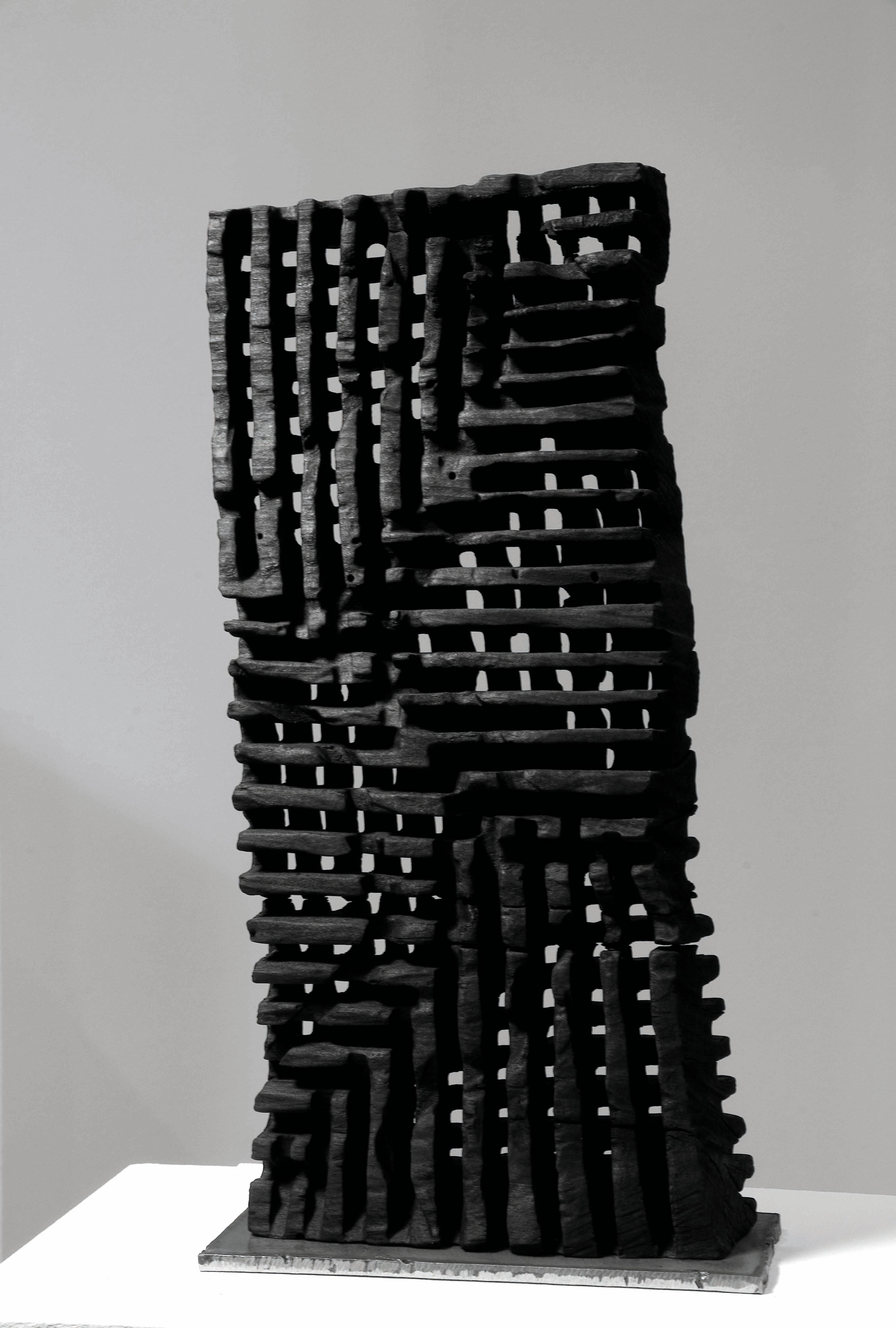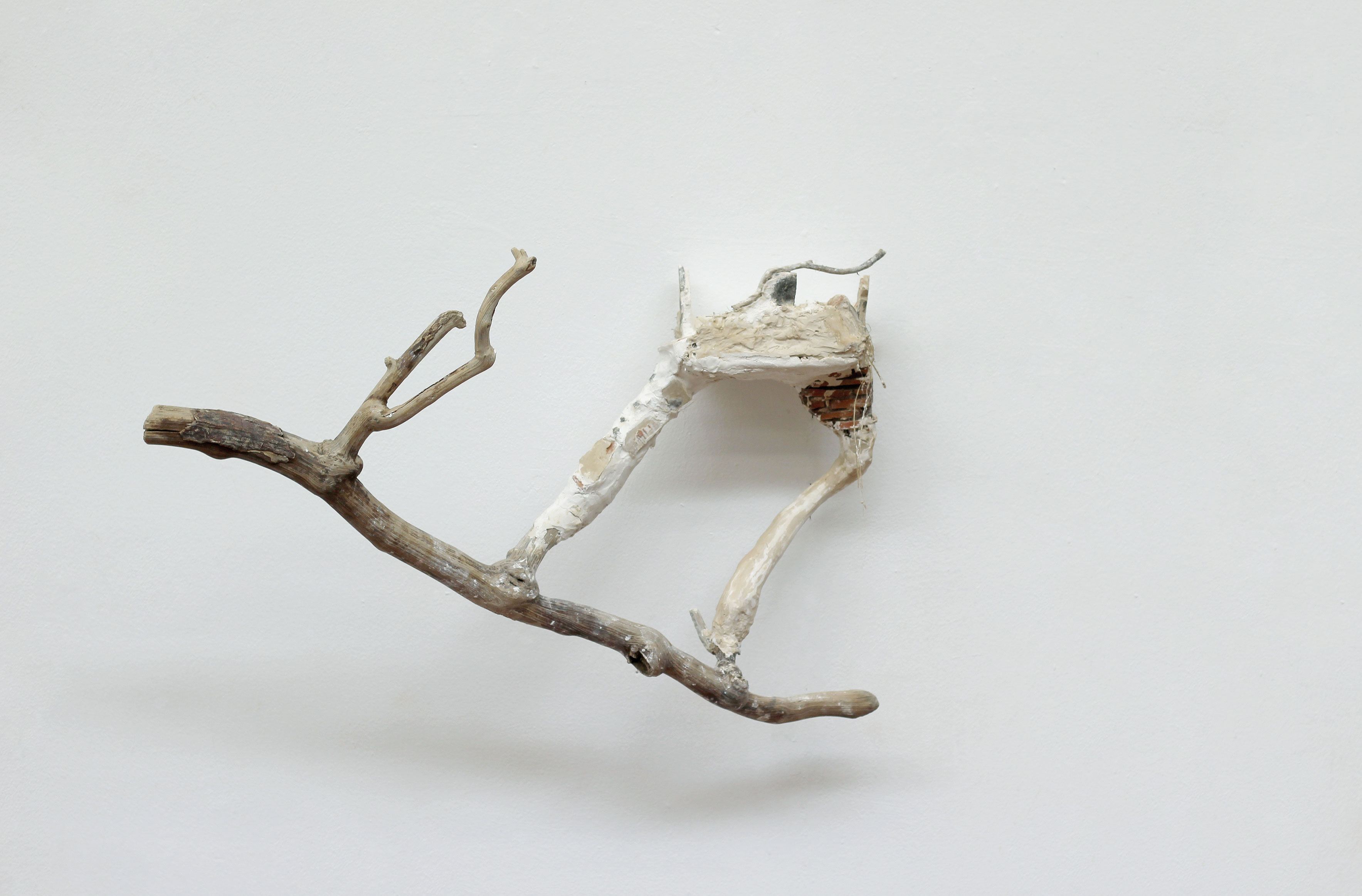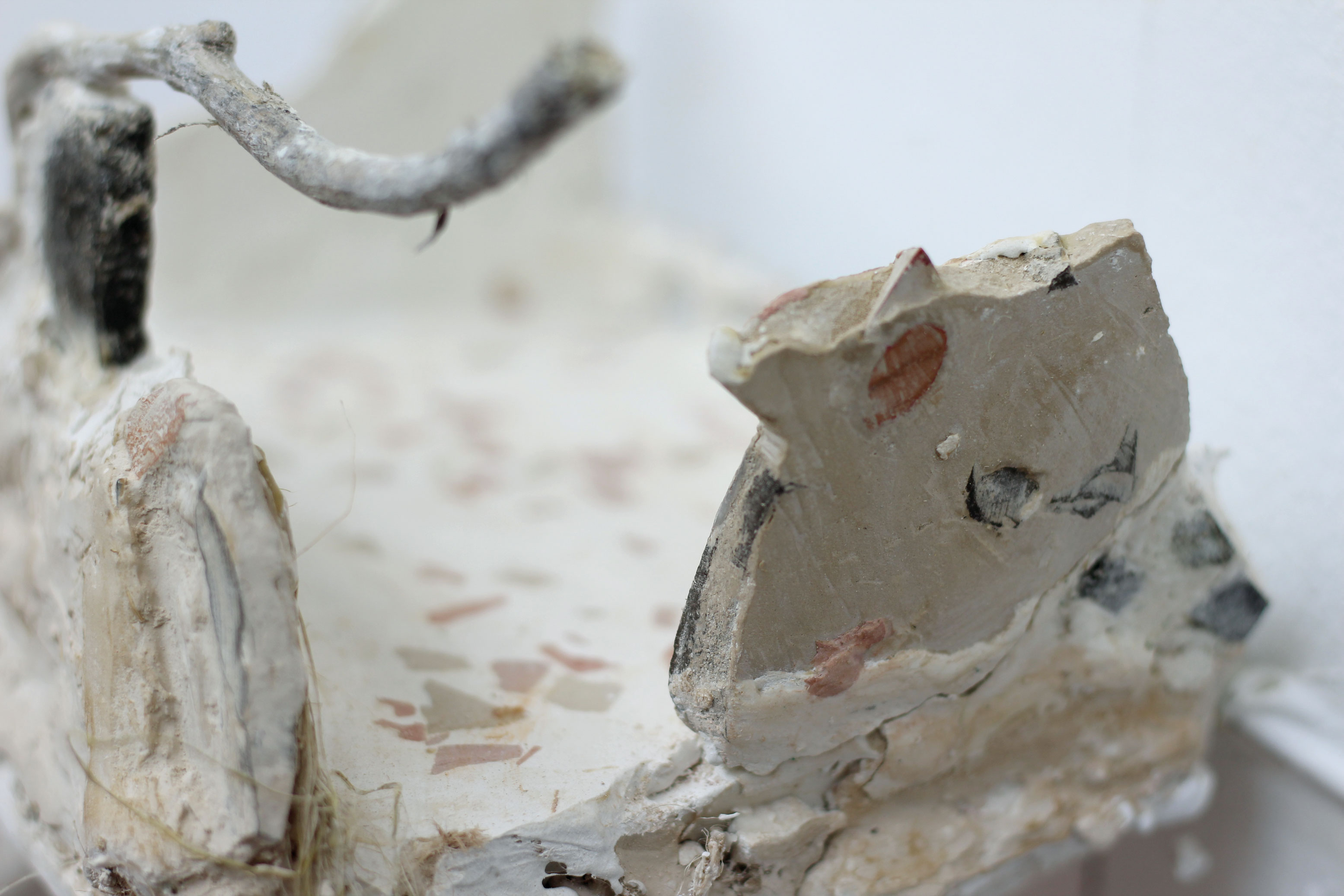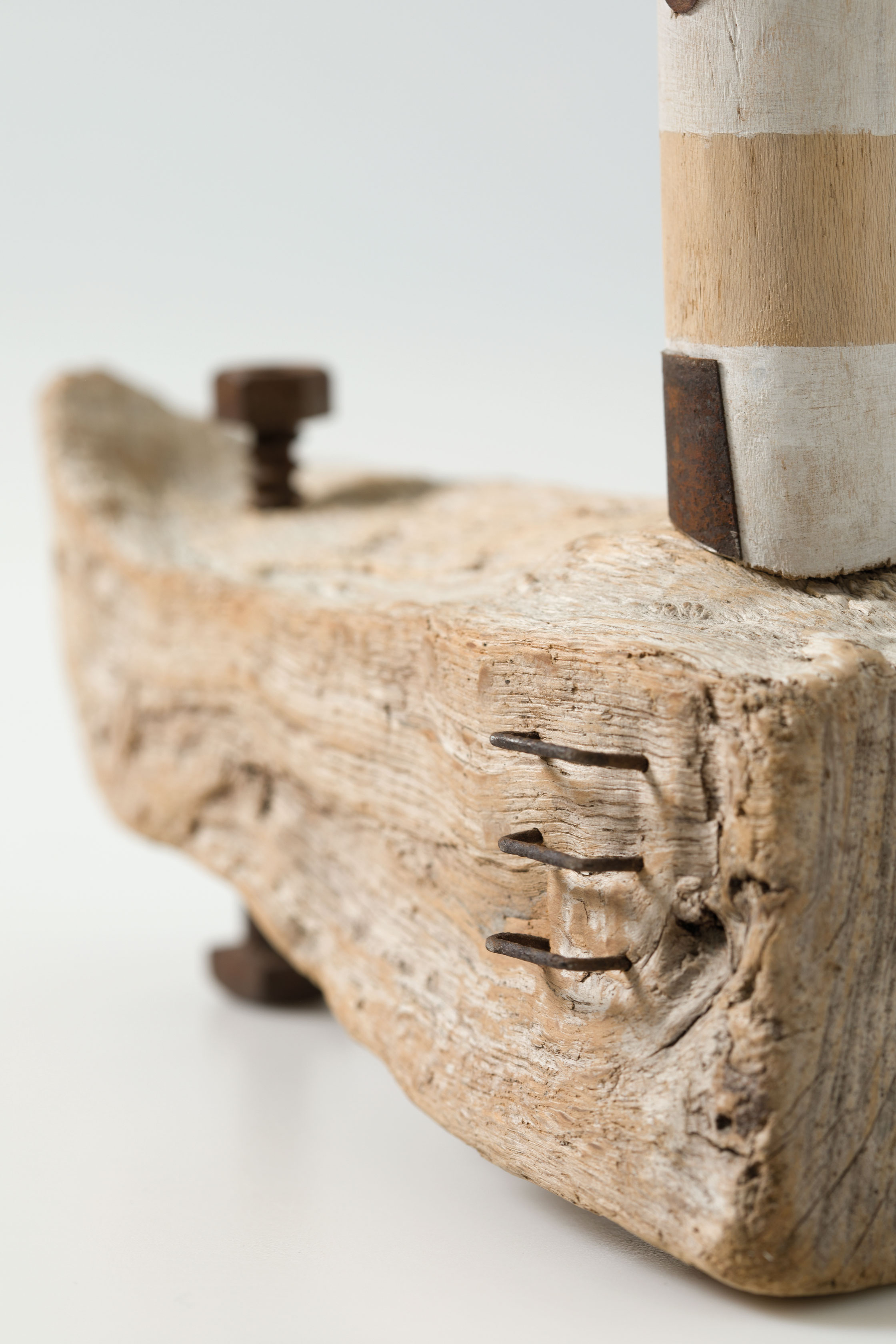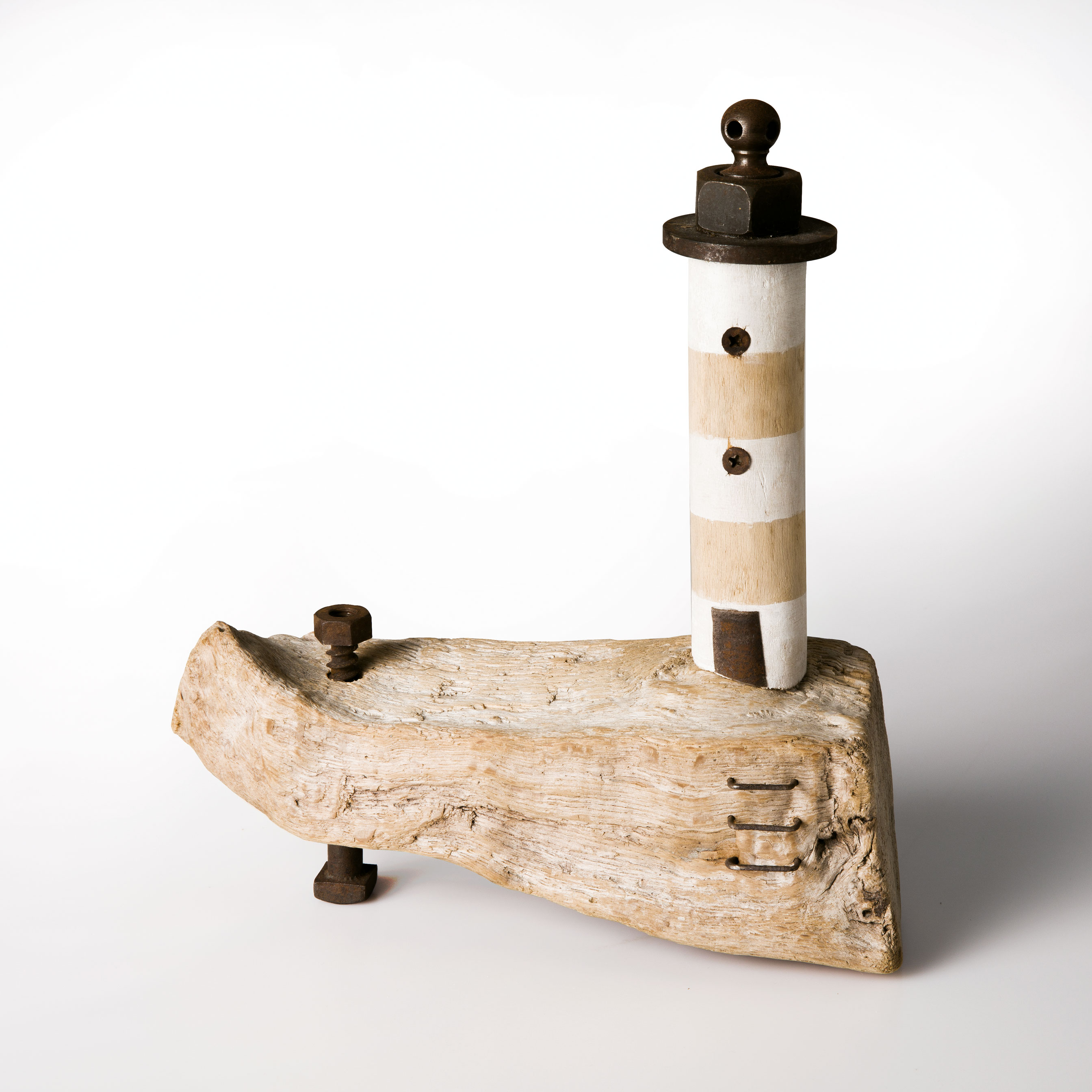They consider wood an exceptional material that connects with their artistic vision, with the human figure and nature itself, bringing together past, present and future. They treat it with fire, combine it with other materials, paint it, carve it by hand or make their way through it with a chainsaw. We chose these six emblematic pieces of woodworking artists:
Escorredoira (2021), Francisco Leiro
Master of a personal and unmistakable artistic style and a very personal language, with a free way of creating, Leiro’s pieces often refer to the popular imaginary, mythology or social commitment (see his works on the Prestige disaster or the war in Syria). In Escorredoira — meaning slide in Galician and referring to the diagonal lines— the artist from Cambados once again shows his interest for the human figure, for the anthropomorphic. These are several volumes composed of polychrome red pine wood, which produces a sense of movement and dynamism.
Senza Titolo (Sin título) (2018), Aron Demetz
Made in walnut and charred plaster, this work is pure Demetz: it explores the human figure with a new and original approach (from a dark point of view, rough) and carbonizes the material to give it a connotation of finitude or death, although the piece still stands, transmitting a message of hope. With Senza Titolo he experiments again with wood creating a unique artistic language, inspired by life. “The question is: does art allow you to experiment, to play? The material is available, but making it work is another matter,” says Demetz.
Forest of Threes (Bosque de Tres) (1977), Rosemarie Castoro
It was in Colorado that Rosemarie Castoro, knife in hand, began carving branches. This piece of the polyhedral artist, made with a mixture of different carved woods, connects the dance with an abstract wood from her particular way of interpreting space. “I want to sculpt it”, she wrote in her diaries. Forest of Threes is a minimalist and surreal work (in 2020 it was presented at the Thaddaeus Ropac gallery in Paris as part of an exhibition of 14 pioneering women in Europe and America who contributed to expanding the aesthetic of minimalist art) and also allegorical. “Rosemarie’s family is Italian. Apparently, her father spoke with a strong Italian accent. So when he said the word “tree” it sounded like “three”. That is how the title of the work came about. Of course, there are also three tree branches used to create a t(h)ree”, explains her husband, Werner Pichler. Castoro put it this way: “A choreography of permanent flexibilities in an otherwise transitory world”.
Transparent Black (Negro transparente) (2009), Jhemp Bastin
Bastin’s contrasts and the precision with which he handles the chainsaw, his distinctive tool, are present in this work. “I use this machine to create rather than to destroy. Indeed, it is a technical challenge, but I particularly like the paradox of using a rough machine to make fine, filigree shapes. Perhaps it would be too easy and less interesting to use a more traditional technique. The traces that the chainsaw leaves on the wood are very significant for my work.
These grooves, furrows and lines are like a drawing, a drawing that testifies to the genesis of the sculpture,” he explains. Transparent Black is a geometric work based on cubes and rectangles in which he plays with the opposition between the full and the empty, the thin hollows (transparent) and the black color of the charred wood, coming from the logs that he collects next to his house. “The logs of my workshop are like individual characters, who I am getting to know. They all have concrete stories; some are over two hundred years old. Establishing a dialogue with them requires a certain respect and listening ability”, says Bastin about how he seeks to reveal the secrets of the tree’s nature.
Casa en el árbol (2021), Eguzkiñe Egaña
This sculpture mixes materials that are used in construction such as wood and terrazzo ceramics embedded in plaster (elements often hidden behind a wall or a façade, that bring memories when coming to the surface) with LED lights (light illuminates those experiences). Casa en el árbol is a direct shot into childhood: “It is completely experimental, everything was about trying and seeing what happened. However, for me it has a more emotional and conceptual value tan aesthetic. This work takes me back to my childhood, when my friends and I made houses in the trees and there we spent hours sitting and eating sweets. It makes me nostalgic. Nowadays my daughters play very differently”. The piece shows Egaña’s taste for imperfect finishes, el irregular appearance and asymmetry. A reflection of life. “It is paradoxical because I am very fussy and perfectionist, but, at the same time, I do not like the rigidity, nor the posing, nor the falseness that is hidden many times behind what appears to be perfect. I like naturalness and maybe that’s why I appreciate when something is seen as it is,“ says the artist.
El faro en la isla (2021), Claudio y Juan (Flotboats)
For Claudio and Juan, the artists behind Flotboats, creation comes from experimentation. “Wood is a perfect material for it. Always unique and different,” they say. And in this work, El faro en la isla, they also play. With driftwood, pieces of reused metal (screws, nuts, wires that have had a previous life) and acrylic paint they created a small island that seeks balance, rising and falling to the beat of the tides. Floating in a sea that cannot be seen, but can be sensed. The sea, always the sea.


